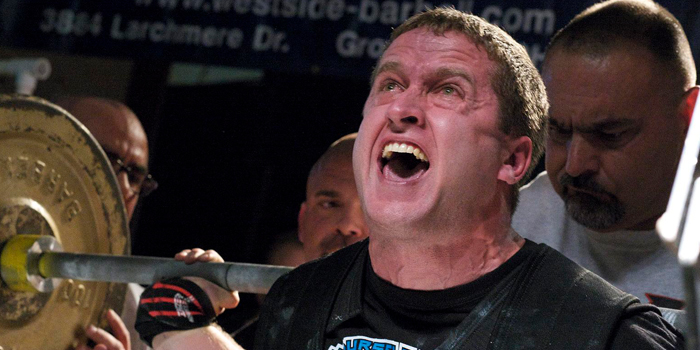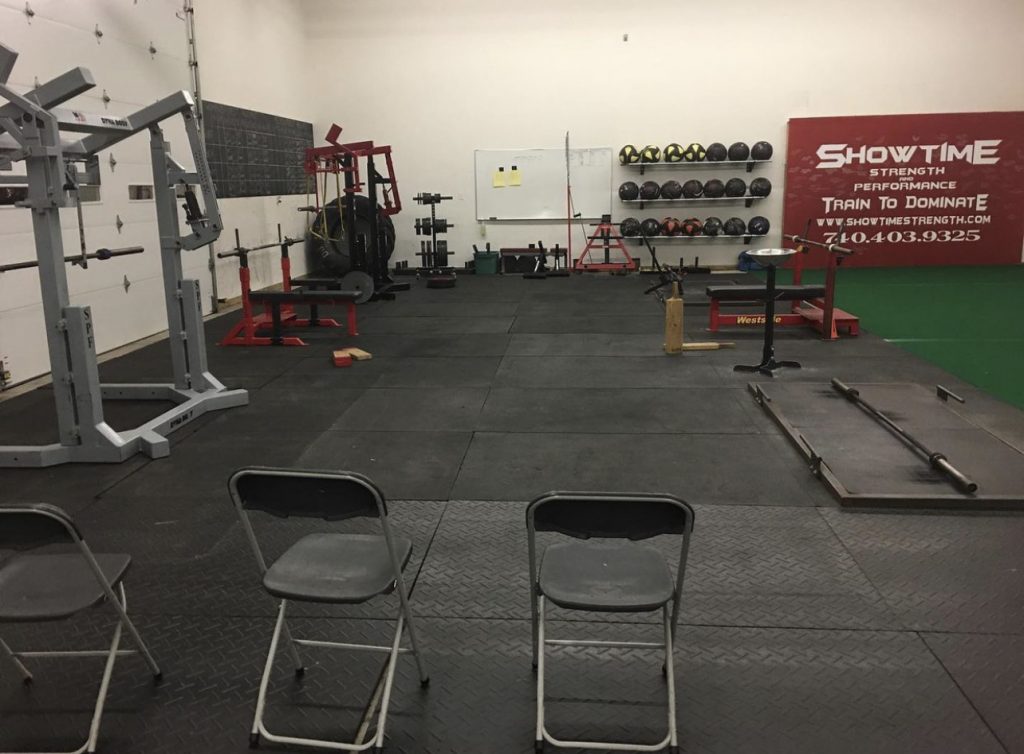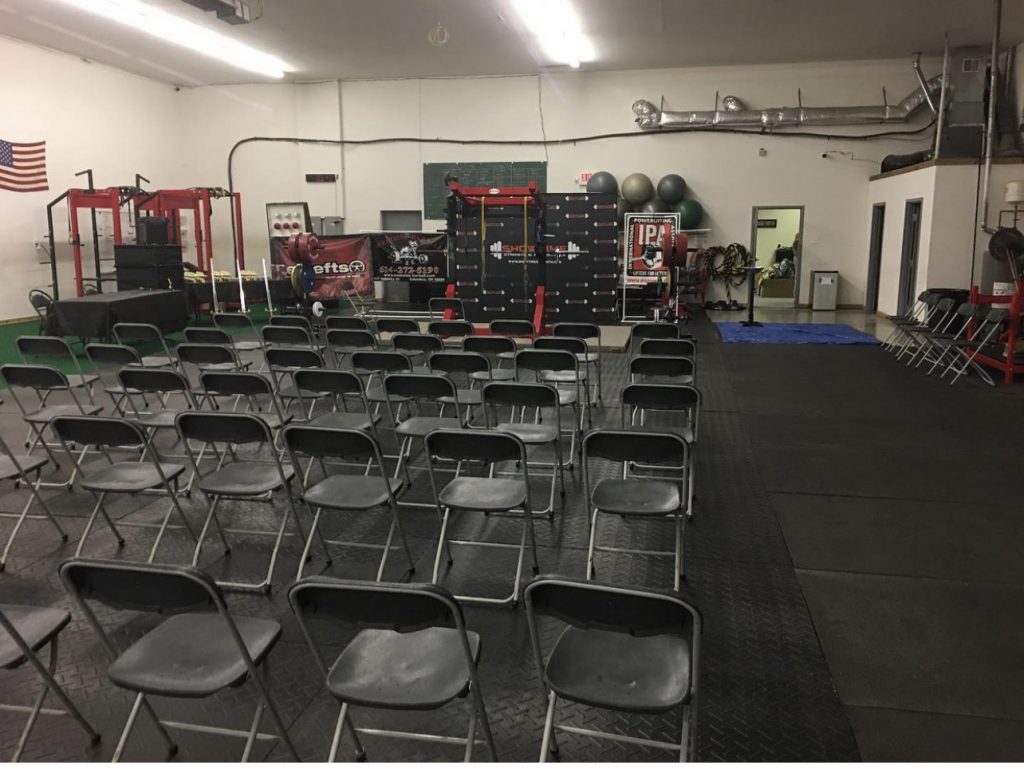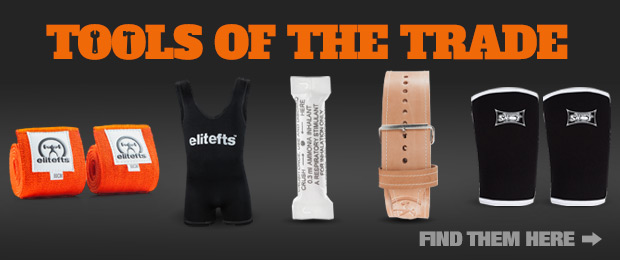
More small independent gyms are opening each year—a great sign that the world of fitness is changing, and more people see the value in a real training experience. There is a definite need for revenue-generating ideas as a gym owner. Events can be a great way to add revenue and help offset some equipment expenses while creating wider visibility for your facility. Many gym owners will decide to host a powerlifting meet, but this can be very overwhelming if you have never run an event.
At Showtime Strength & Performance, Josh Gutridge and I have run close to 30 powerlifting meets ranging from 20 lifters to 70, beginner lifters to world records, and everything in between. We have been to many meets from unsanctioned gym meets to several nationals and invitational meets across the country. This will serve as what we have learned from running meets and how we grew the meets into a great experience for the lifters, spectators, and the people helping run the meet. The truth is, you will make less money running powerlifting meets than anyone thinks, and they will take more time to build up than expected.
Planning the Meet
Take a look online and see what meets are in your area. If there are already too many meets in your area, this can help you pinpoint a date. Next, decide who the meet is for. Is it just a fun gym meet for your members, or are you looking to attract lifters from all over to compete? If you want a competition for numbers to count and draw more serious lifters, get your meet sanctioned through an organization you feel the most comfortable with. Going this route will require payment and signed documents that acknowledge you're following their guidelines.
RELATED: All In — When I Got to Westside
Many federations will have the option of getting event insurance through them, or you can purchase event insurance through another party. While it's tempting to let this slide and save money, I have never thought it was beneficial to cut that corner. You have people you don't know lifting maximal weights in a competitive environment, which will increase the risk of injury. Overall, it's better to be safe than sorry and have something come back on you or the facility.
Support Staff
After being to many meets, the biggest difference we see in bad meets and great meets are the people helping run the event. Here is a list that we use to ensure we have enough people to make the meet run safely and smoothly.
- Admissions: Two people
- Apparel/Food: Two people
- Scores Table: Three people
- Judges: Three people
- Spotters: Four people
- Squat Only- Run Monolift: One person
- Loaders: Three to four people
- Weight Chart: One person
- Clean Up: One to two people
As you can see here, it's very easy to have 20 people to help run a smooth, efficient meet. Twenty helpers may seem like a lot, but when you have 60 lifters, and weights need to be adjusted quickly and correctly, it makes a world of difference. Also, pay these people and provide food and drinks during the meet. Making an effort to pay and feed them goes a long way, and they'll help you again in the future. Don't expect people to give up their weekend and work hard to help you out.


Equipment Needed
Like the support staff, a meet with inadequate equipment is a disaster and will create chaos for the lifters and meet director. Equipment can be tricky because competition-grade equipment is very expensive. Located in central Ohio, we're lucky to have gyms close by that we can borrow from if needed. Here is the equipment list we make sure to have for our meets:
- Platform (1)
- Monolift (3)
- Squat Bars (3)
- Bench Bars (3)
- Deadlift Bars (3)
- Bench Press (3)
- Deadlift Jacks (3)
- Safety Straps (3)
- Competition Collar Sets (2)
- Regular Collars (2)
- Board Press Boards
- Chalk Bowl (2)
- Wire Brush (1)
- First Aid Kit (1)
- Calibrated Plate Set (1), If the meet is sanctioned, plates should be calibrated
- Weight Trees (3), Get the trees with wheels
- Lights (1)
- Speaker System (1)
If that list sounds like a lot, it's because it is. To keep the meet moving smoothly, this is what we've found to be the best setup. With the warm-up equipment, it should at least be very similar in quality and function as to what will be used on the platform. To help us get equipment gathered for the meets, I take money from each meet when starting and purchase another piece. With this approach, you can build your inventory and spend less time trying to hunt down equipment to borrow.
More Expenses
While some of these might seem trivial to mention, it all goes into the cost of the event.
- Sanction Fee
- Event Insurance
- Support Staff
- Chalk
- Trophies
- Overall Trophies
- Chairs and Tables
- Wrist Bands
- Food and Drinks
- Tarp (for containing baby powder)
- Meet Shirts (if applicable)
- Cleaning Supplies
- Advertising
Sponsorships
There is no doubt that getting sponsors for your event can help you offset some costs of putting everything together. Sponsorships are becoming more difficult to obtain as competition in the supplement and fitness industries has grown tremendously. You will find supplement companies that want to donate products, which helps create a better competitor experience but doesn't help with revenue.
When working with companies who want to give a donation-based sponsorship, we look for companies that will provide samples for each competitor and some full-size products to help create overall prize packages. These go a long way and show that you're creating a better experience for the competitors.
It's wise as a promoter to look for local businesses to help with your event. For example, find a local supplement store that can set up a booth and hand out samples with their information on it. We try to always partner with a local restaurant for our meets to tell people where they should go to eat breakfast after a weigh-in or after the meet is over. A partnership like this works very well.
Another idea is working with local hotels if your event gets big enough to draw people from out of state. Many hotels will offer a free room when a certain number of rooms are booked under your code. With sponsorships, try to approach each company in a way that you can provide value for them to give you money or product. Consider social media posts, email blast mentions, etc. The days of expecting a check in exchange for a spot on the flyer are over. Show companies how you can add value for them, and they'll gain interest in your meet.
Recap
In closing, when you're thinking about hosting a meet at your facility, imagine the meet you always wanted to compete in. Take care of the lifters you have, and slowly your reputation will build—more groups will come to your event. Every meet will have an issue, many of which are hard to plan for, but having a planning process can help minimize these issues. Our meets grew quickly with competitors because of meet efficiency and starting small. We also held meets frequently to get more practice and create better systems for every process. Remember, the money you generate from these events may not be what you hoped for, but over time can serve as a good supplemental bump for your gym over time.
Showtime Strength & Performance owner Nick Showman has years of experience coaching youth, high school, collegiate-level, and professional athletes. Nick competed in powerlifting for six years while a member at Westside Barbell. His best lifts are a 942 squat, 700 bench press, and 760 deadlift. Nick lives in Granville, Ohio with his wife and dog.











Food
Apparel
Sponsors
Medals
Best Lifter prizes
Gas
Help
The list goes on but I love seeing things like this.